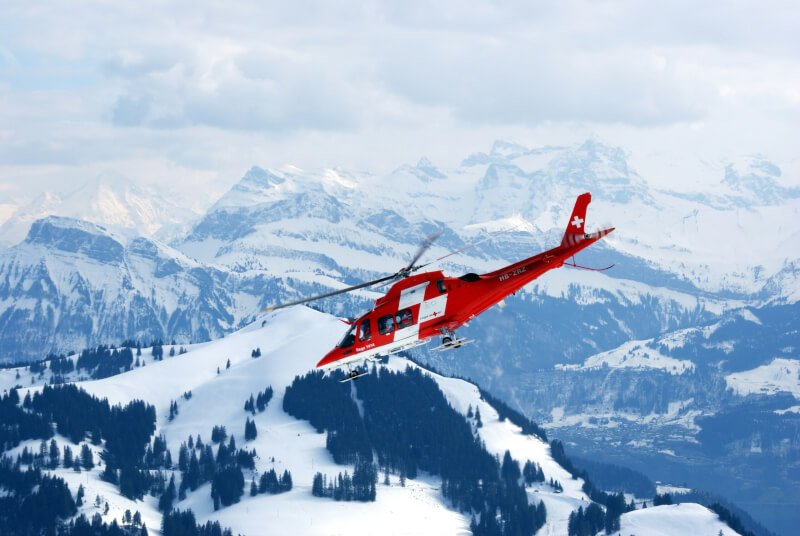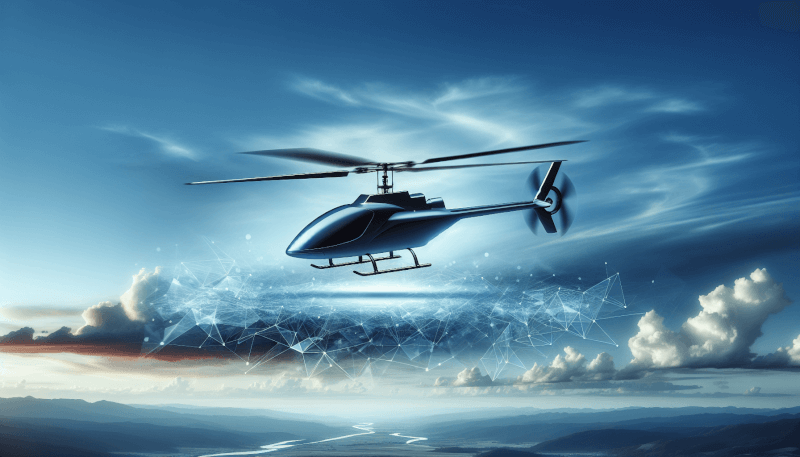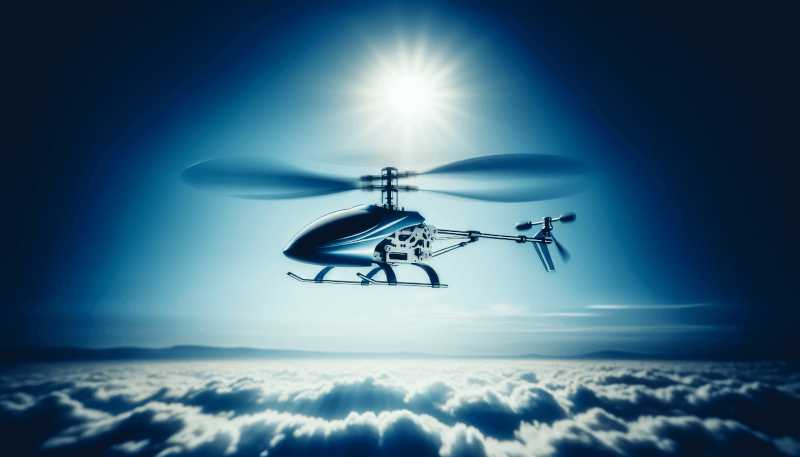If you find yourself struggling to maintain stability and control while operating your RC helicopter, fret not! This article has got you covered with some valuable tips that will help you elevate your RC flying game. Whether you are a beginner or a seasoned pilot, these tips are designed to enhance your skills and make your flights smoother and more enjoyable. So, tighten your seatbelts, get ready to soar high, and let’s dive into the world of improving your RC heli’s stability and control.
Balance and Trim
Properly balancing your helicopter is essential for achieving stability and control during flight. Imbalanced helicopters tend to tilt or drift in one direction, making it challenging to maneuver accurately. To balance your helicopter, you need to ensure that its center of gravity is evenly distributed. You can achieve this by adjusting the position of the battery, electronics, and any additional components. Place your helicopter on a level surface and check if it remains stable. If it tilts or tips to one side, make small adjustments until it remains upright.
In addition to balancing, you should also pay attention to the trim settings. Trim settings help you adjust the control surfaces to counteract any unwanted movement or deviation. Most helicopters have trim tabs on the remote control transmitter, which allows you to fine-tune the trim settings. Adjust the trim until your helicopter remains steady without tilting or drifting when the controls are centered. This will help you maintain a more stable and controlled flight.
Using a level tool is also beneficial when working on your helicopter’s balance. A level tool, such as a bubble level or smartphone app, can be placed on top of your helicopter to ensure that it is perfectly level. This ensures that the rotor blades are in the correct position and that the helicopter is not tilted. Adjust the positioning of your helicopter until the bubble is centered in the level, indicating a balanced and level aircraft.
Stabilization Systems
Installing a gyroscopic stabilization system can significantly improve the stability and control of your RC helicopter. A gyroscopic stabilization system helps counteract any unwanted movement or drift by automatically making adjustments to the helicopter’s control surfaces. It senses any changes in the helicopter’s position and makes corrections in real-time, allowing for a smoother and more stable flight experience. Make sure to choose a gyroscopic stabilization system that is compatible with your helicopter’s size and model.
Another option to consider is using a flybarless system. Unlike traditional flybar systems, flybarless systems eliminate the need for a flybar and rely solely on electronic gyroscopes for stabilization. This reduces the mechanical complexity of your helicopter and can result in improved responsiveness and stability. Flybarless systems require proper setup and calibration, so make sure to follow the manufacturer’s instructions for optimal performance.
Once you have installed the stabilization system, you may need to adjust the stabilization settings. These settings determine the sensitivity and responsiveness of the stabilization system. It is advisable to start with conservative settings and gradually increase them until you achieve the desired stability and control. Experiment with different settings to find the balance that works best for your flying style and preferences.

Rotor Blade Setup
Choosing the right rotor blade size is crucial for maintaining stability during flight. The size of the rotor blades affects the lift and responsiveness of your helicopter. Larger blades provide more lift, but they can also be heavier and more challenging to maneuver. Smaller blades, on the other hand, may not generate enough lift and can result in unstable flight characteristics. Consider your flying style and the specifications of your helicopter when selecting the appropriate blade size.
Once you have chosen the right rotor blades, it is essential to ensure proper blade tracking. Blade tracking refers to the alignment of the rotor blades as they rotate. Misaligned blades can cause vibrations and instability during flight. To check the blade tracking, spin the rotor blades at a low speed and observe their alignment. If you notice any discrepancies, adjust the links or blade grips until the blades track perfectly parallel to each other.
Balancing the rotor blades is another critical step in optimizing the stability and control of your RC helicopter. Imbalanced rotor blades can cause vibrations and affect the overall performance of your helicopter. To balance the blades, you can use a balancing tool or even a simple pencil. Place the blade on the balancing tool, and if one side is heavier, it will tilt downward. Add small pieces of tape or use adhesive putty to the lighter side of the blade until it remains balanced. Balancing the rotor blades ensures a smoother and more stable flight experience.
Weight Distribution
Proper weight distribution is key to achieving stability and control in your RC helicopter. Distributing the weight evenly throughout the aircraft allows for a more balanced flight and prevents any unwanted tilting or drifting. Consider the placement of the battery, electronics, and any additional components when determining the weight distribution. It is advisable to place heavier components closer to the helicopter’s center of gravity, which is typically around the main rotor shaft.
To maximize stability, it is important to avoid adding unnecessary weight to your helicopter. Excess weight can negatively impact both the performance and flight characteristics of your helicopter. Choose lightweight materials when building or modifying your helicopter, and be conscious of any unnecessary accessories or components that may add unnecessary weight. Keeping your helicopter as lightweight as possible will enhance its stability and maneuverability.

Control Settings
Proper control settings are crucial for achieving stability and precise control over your RC helicopter. The control settings on your remote control transmitter determine the sensitivity and range of the control inputs. Calibrating the radio control transmitter is the first step in ensuring accurate control response. Follow the manufacturer’s instructions to correctly calibrate your transmitter, ensuring that the control inputs correspond accurately to the helicopter’s movements.
Adjusting the control throws is another important aspect of optimizing your control settings. Control throws refer to the amount of movement a control surface (such as the main rotor or tail rotor) can make in response to control input. It is essential to adjust the control throws to match the helicopter’s flight characteristics and your flying style. If the control throws are set too high, your helicopter may become overly sensitive and difficult to handle. If they are set too low, your helicopter may not respond as desired. Experiment with different control throw settings until you find a balance that provides stability and responsiveness.
Fine-tuning the control sensitivity can further enhance the stability and control of your RC helicopter. Control sensitivity determines how quickly the helicopter responds to control inputs. It is advisable to start with lower sensitivity settings and gradually increase them until you achieve the desired responsiveness. Be aware that higher sensitivity settings may require more finesse and precise control inputs, so adjust accordingly based on your skill level and comfort.
Proper Servo Setup
Proper servo setup is essential for achieving precise and accurate control over your RC helicopter. Servos are responsible for moving the control surfaces, such as the main rotor and tail rotor, in response to control inputs. Ensuring that the servos are set up correctly is crucial for maintaining stability and control during flight.
First, ensure that the servos are properly centered. Servo centering ensures that the control surfaces are in the neutral position when the controls are centered. If the servos are not centered correctly, it can result in imprecise and inconsistent control responses. Follow the manufacturer’s instructions to center the servos and make any necessary adjustments to achieve the correct neutral position.
Check for any binding in the servo mechanism. Binding occurs when the servo mechanism encounters resistance or obstruction, preventing it from moving smoothly. Binding can negatively affect the flight performance and stability of your helicopter. Inspect the linkages, control rods, and servo arms for any signs of binding or excessive friction. Make adjustments as needed to ensure smooth and unrestricted movement of the servos.
If you find that your servos are not performing optimally or are experiencing issues, it may be worth considering upgrading to high-quality servos. High-quality servos offer enhanced precision, responsiveness, and durability. They are designed to handle the demands of high-performance RC helicopters and can contribute to improved stability and control. Consult with experienced pilots or do thorough research to find the best servos for your helicopter model.

Fine-tuning the Gyro
The gyro is a critical component of your RC helicopter’s stabilization system. It senses any changes in the helicopter’s orientation and makes corresponding adjustments to maintain stability and control. To optimize the performance of the gyro, it is essential to understand the gyro settings and make necessary adjustments.
Before making any adjustments, familiarize yourself with the gyro’s settings and functions. The gyro settings may include gain, heading hold, and various modes. Gain refers to the sensitivity of the gyro’s response to changes in the helicopter’s orientation. Higher gain settings provide more stability but can also lead to unwanted oscillations or sluggishness. Lower gain settings may result in a more responsive but potentially less stable helicopter. Experiment with different gain settings to find the right balance for your flying style and the conditions you typically fly in.
Eliminating any unwanted oscillations is a crucial aspect of fine-tuning the gyro. Oscillations, also known as tail wag or wagging, occur when the helicopter’s tail moves side-to-side rapidly. This can negatively impact stability and control. Adjust the gain settings and other gyro parameters to minimize or eliminate oscillations. It may require some trial and error to find the optimal settings for your specific helicopter and flying conditions. Take your time and be patient during this process, as it can significantly improve the stability and performance of your RC helicopter.
Training Gears
For beginners or those looking to improve their flying skills, using training gears can greatly enhance stability and control. Training gears are additional supports attached to the helicopter’s skids or landing gear. They provide extra stability and prevent the helicopter from tipping over during takeoff and landing. Training gears also offer added protection to the helicopter’s main rotor blades in case of rough landings.
Using training gears gives beginners the opportunity to practice hovering and maneuvering with greater confidence. It allows you to focus on mastering the basic flight controls without the fear of crashing or damaging your helicopter. As you become more comfortable and proficient, you can gradually remove the training gears. However, it is important to note that training gears may also influence the flight characteristics, so be prepared for a slight adjustment period when removing them.
To practice hovering and maneuvering with training gears, start by getting comfortable with maintaining a stable hover. Gradually increase your control inputs to make small movements in different directions. Once you feel confident in maintaining a stable hover, you can begin practicing basic maneuvers such as forward flight, figure eights, and banking turns. Remember to take it slow and gradually increase the complexity of your maneuvers as you progress.

Maintenance and Inspection
Regular maintenance and inspection are crucial for ensuring the ongoing stability and control of your RC helicopter. Frequent flights and inevitable crashes can lead to wear and tear, which can affect the overall performance and safety of your helicopter. Here are some key maintenance and inspection tips to keep your helicopter in optimal condition:
Regularly inspect and clean your helicopter after each flight. Remove any dirt, debris, or grass that may have accumulated on the helicopter’s frame, main rotor blades, and other components. Check for any signs of damage, such as cracks, loose screws, or bent parts. Address any issues immediately to prevent further damage or instability.
Pay close attention to the main rotor and tail rotor blades. These components are essential for maintaining stability and control. Inspect them for any signs of wear, such as nicks, dents, or signs of fatigue. Replace worn-out blades promptly to ensure safe and stable flight.
Check for any loose parts or screws. Vibrations during flight can cause screws and other fasteners to loosen over time. Tighten any loose screws or components to prevent potential instability or failure during flight.
Regularly inspect the battery and electrical connections. Make sure the battery is securely connected and in good condition. Inspect the wiring and connectors for any signs of wear or damage. Secure any loose connections and replace any damaged components to avoid potential power failures or glitches during flight.
Flight Techniques
Improving stability and control goes beyond the technical aspects of your RC helicopter. It also involves developing and mastering proper flight techniques. Here are some tips to enhance your flight techniques and improve stability and control:
Practice smooth throttle and pitch control. Smoothly adjusting the throttle and pitch inputs allows for precise control and smooth transitions during flight. Avoid sudden and jerky movements, as they can lead to instability and loss of control. Gradually increase the throttle and pitch inputs to achieve more aggressive maneuvers once you have a solid foundation in basic flight controls.
Learn proper collective management. Collective management refers to controlling the overall pitch angle of the main rotor blades. Understanding and mastering collective management allows you to maintain a stable hover, perform precise maneuvers, and manage the helicopter’s rate of climb or descent. Practice gradual and smooth collective inputs to maintain stability and control throughout the flight.
Master necessary maneuvers. In addition to hovering, it is essential to practice and master necessary maneuvers to enhance your stability and control skills. Maneuvers such as forward flight, figure eights, hovering in different orientations, and banking turns will improve your overall flying abilities. Take your time to perfect each maneuver before moving on to more advanced techniques.
Remember, improving stability and control takes time and practice. Be patient and persistent in your efforts to fine-tune your RC helicopter. By following these tips and focusing on the various aspects of balance, stabilization systems, rotor blade setup, weight distribution, control settings, servo setup, gyro fine-tuning, training gears, maintenance, and flight techniques, you will enhance your RC helicopter’s stability and control, ultimately leading to a more enjoyable and rewarding flying experience.



